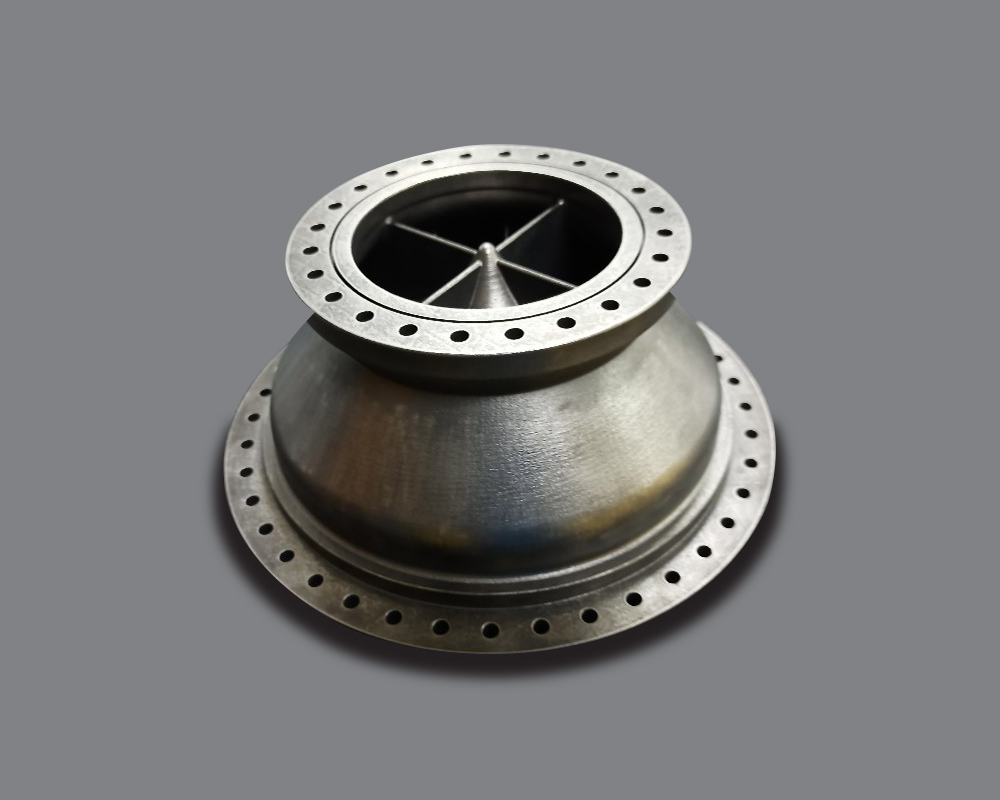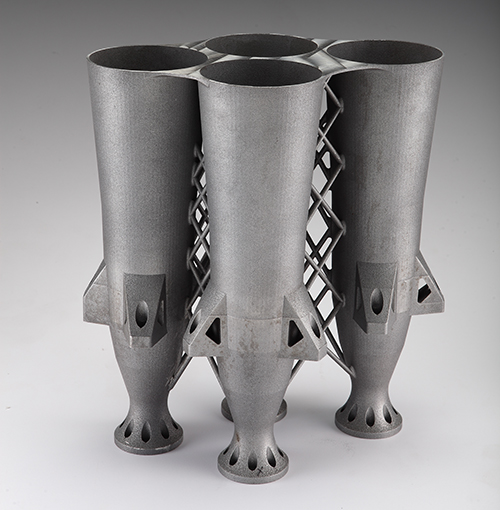
Exhaust Casing is part of C20 Engine. ISRO has conducted hot testing on this part.
By: Yathiraj Kasal
Additive Manufacturing, also known as 3D Printing, is a process that creates a three-dimensional component by building up successive layers of material. The technology has been around since the 1980s, but is being adopted by the industry rapidly in recent years, due to advances in materials, software, and hardware. This technology offers several advantages such as cost-effectiveness, speed, performance improvement and design freedom. Design freedom enabled by Additive Manufacturing has resulted in innovations in almost every industry application. The gear manufacturing industry can also benefit greatly, as 3D printing offers many benefits for the production, prototyping and repair of gears and related components.
Additive Manufacturing has delivered multiple benefits to various industries. Space and Aviation, for example, has leveraged design freedom enabled by Additive Manufacturing.
Prototyping: Additive Manufacturing is an excellent option for creating prototypes of gears and related components. The process allows designers / manufacturers to quickly and inexpensively produce a working model that can be tested and evaluated. This can save time and money compared to traditional manufacturing methods and also help to identify and resolve design issues before mass production begins. The reduction in cycle time will allow designers to do more iterations, and optimize the performance further. The reduction in cycle time would also allow companies to quickly introduce their products to market.
Customization: Additive Manufacturing offers the ability to produce gears and components that are customized to specific applications. For example, a gear with a unique tooth profile or an unusual shape can be designed and printed quickly and easily. This can be a big enabler in Electric Vehicles, Drones, Automation, and other such industries.
Short-run production: Additive Manufacturing is useful in short-run production of gears and components, allowing manufacturers to produce small quantities of parts as needed. This reduces the need for large-scale investment in tooling and machinery, and enables companies to quickly respond to market demands.
This can be especially useful for manufacturers that need to produce specialized parts for niche applications.
Tooling and Fixtures: Additive Manufacturing can be used to produce custom tooling and fixtures such as jigs and mandrels for gear production. This can reduce production time and improve accuracy compared to traditional manufacturing methods.
Replacement Parts: In case of breakdowns or wear and tear of gears, Additive Manufacturing enables the production of replacement parts on demand. This can save time, and reduce downtime for companies, improving their overall productivity.
A variety of materials can be used for 3D printing gears and related components for various applications. Following are the broad material groups being used in Additive Manufacturing:
Polymers: Various polymer materials are a common choice for 3D printing gears and related components, as they are lightweight, low cost, and easy to work with.
Metals: Titanium alloys, nickel-based super alloys and aluminum alloys are widely used in Additive Manufacturing for space, aviation and medical industries. There is a good range of tool steel and stainless steels, which are routinely being used in Additive Manufacturing. More focus is needed in bringing gear steels to Additive Manufacturing. Metal powders for some gear steels such as AISI 8620, 16MnCr5 and 20MnCr5 are available today.
Composites: Composites are a combination of two or more materials and can be used to create gears and components with specific properties. For example, a carbon-fiber reinforced polymer can be used to produce a lightweight, high-strength gear.
There is an increasing interest in using Additive Manufacturing for various gear applications. It has a proven track record in other industrial applications, and it only makes sense to induct Additive Manufacturing as another viable option in gear applications.
Here are a few areas where one can expect to see more action in the near future:
Innovation: In gear applications, Additive Manufacturing can be disruptive by enabling design and manufacturing of features such as internal channels, which can be used for either cooling or lubrication. The lightweight gear system could be a great value-add to applications such as drones, to increase the range of the drone system. Various other innovations to improve performance of gear systems could be realized, as Additive Manufacturing promises to deliver the manufacturing ability of many complex features. Further, through the innovative use of materials or a combination of materials, there could be many more possible innovations.
Improved materials: The development of new and advanced materials for Additive Manufacturing will further enhance the capabilities of this technology. This will result in gears with improved strength, durability, and wear resistance, making them suitable for a wider range of applications.

Feed Cluster is part of GSAT-19 Satellite launched on 5th June 2017. This was the first 3d Printed part from India to reach space. This is a part of Communication Satellite
Integration with traditional manufacturing methods: In the future, Additive Manufacturing is expected to be integrated with traditional manufacturing methods such as casting, forging, and machining. This will enable the production of gears with improved accuracy, strength, and surface finish, further enhancing their performance.
With advancements in Additive Manufacturing, the adoption of this technology in the gear manufacturing industry is expected to increase
Increased adoption: With advancements in Additive Manufacturing technology, the adoption of this technology in the gear manufacturing industry is expected to increase. This will enable companies to improve their competitiveness and offer more advanced products to their customers.
In conclusion, Additive Manufacturing has the potential to revolutionize the gear manufacturing industry. With its numerous advantages, it has the potential to change the way gears are designed, produced, and used. As the technology continues to advance, it will offer new and exciting opportunities for companies in the gear manufacturing industry to improve their competitiveness and offer innovative products to their customers.
 The author is Yathiraj Kasal General Manager, Wipro 3D, Bangalore
The author is Yathiraj Kasal General Manager, Wipro 3D, Bangalore